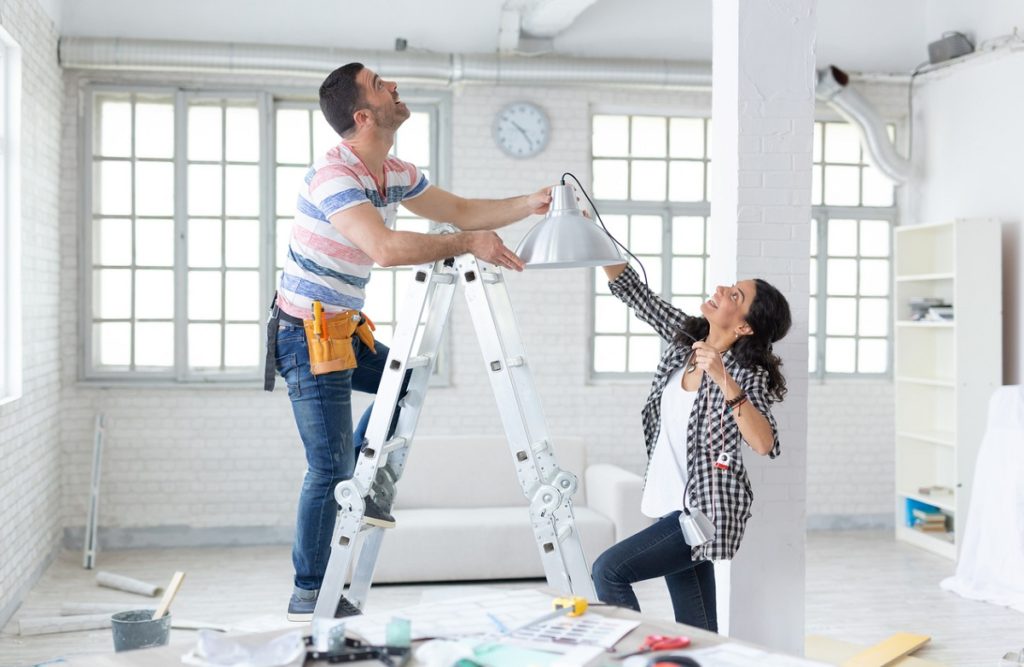Why It Pays to Fix Up Your Home


Homeowners know only too well that their treks to hardware stores, calls to plumbers and emergency replacements of appliances dent their checkbooks. Owners also ought to know why it’s important for them to keep good records on what their outlays add up to.
The ones who scrupulously hoard receipts lose less to the IRS when they sell their dwellings. Here’s how long-standing rules presently hurt and eventually help owners.
They aren’t entitled to claim annual write-offs for their spending on improvements, cautions the IRS, when any of the following events occur: The improvements increase the value of their residences, prolong their useful lives, or adapt them to new uses. More on that several paragraphs below.
Owners don’t permanently forfeit those write-offs. They’re able to add such expenditures to their home’s cost basis—the figure they must use to determine gains or losses from home sales. Consequently, improvements decrease any taxable gains on eventual sales.
Profit exclusions. Back in 1997, Congress and President Clinton created a big break for sellers who realize profits from sales of their principal residences. The law change allows sellers to “exclude,” meaning sidestep, taxes on sizable portions of such profits.
Our lawmakers decided that the exclusions shouldn’t be unlimited, capping them at $500,000 for married couples filing joint returns, dropping to $250,000 for single persons or married couples filing separate returns; sellers with gains greater than $500,000/$250,000 remain liable for taxes on excess amounts.
The exclusion caps created nearly twenty-five years ago remain $500,000/$250,000. Does it trouble our lawmakers that there’ve been substantial increases in sales prices for homes in most parts of the country in recent years, especially since the onset of the pandemic? Nope.
While our lawmakers are unwilling to authorize indexing for the caps, they’re willing to authorize indexing for the standard deduction amounts available to filers who opt not to itemize on Form 1040’s Schedule A for things like state and local property and income taxes, and charitable contributions. Add to the list the tax brackets for ordinary income from sources like salaries and long-term capital gains from sales of assets owned for more than one year.
Improvements versus repairs. What homeowner Sadie spends on improvements that increase value, prolong useful life, or adapt to new uses increases her home’s cost basis. What she shells out for repairs and maintenance doesn’t; they just maintain her home in good condition.
Sadie makes improvements when, for example, she adds a room, puts up a fence, upgrades electrical wiring, replaces her roof, puts in a new furnace, paves her driveway, or installs plumbing fixtures.
Sadie makes repairs when, say, she repaints her house inside or outside, fixes a leaky faucet, replaces a broken window, mends gutters, shampoos carpets, or tunes up a furnace.
Improvements extend beyond structural items. It’s okay for Sadie to include tools and equipment for the upkeep and running of her home. Sadie and other owners often overlook items such as these:
*New appliances, like a refrigerator or clothes dryer.
*A barbecue in the back yard, a mailbox out front, a birdbath, and an underground sprinkling.
*Garden and workshop tools, a lawn mower, fireplace accessories, and other items for upkeep.
*Light switches, doorknobs and locks to upgrade existing ones, as well as mirrors, extra phone jacks, towel racks, window shades and a TV antenna.
*Termite protection, waterproofing, a burglar or fire alarm, and an assessment for new sewer lines.
*Aluminum siding, paneling in a family room, carpeting, built-in-bookcases, and cabinets in a laundry room.
The IRS acknowledges that some repairs can turn into improvements. While it’s normally a repair when Sadie seals a roof leak, it becomes an improvement if she replaces a sizable part of the roof.
Some twists and turns. The IRS admonishes that it considers appliances and other moveable items to be improvements only if they remain with Sadie’s home when she sells it. Consequently, a tax-savvy Sadie lists those items in the sales contract to prove she left them behind.
Another no-no is for Sadie to claim an identical outlay twice. In the case of repeat expenditures, as when she replaces a water heater or washing machine more than once, she gets to claim the cost of the latest expenditure and has to subtract the previous one.

